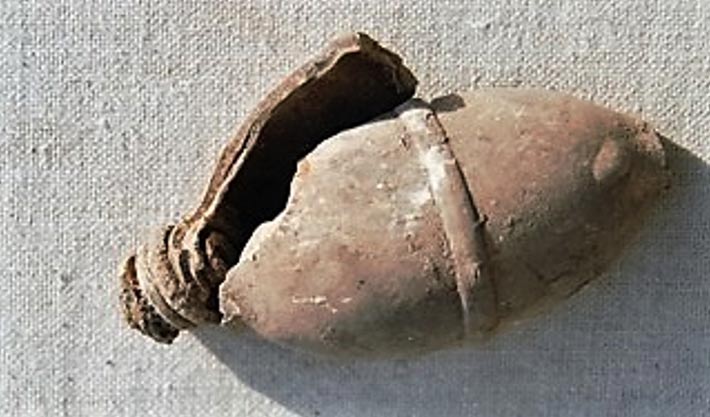
The low notes can be made to sound good and in-tune at a variety of pressures, but the higher pitches are substantially less sensitive to changes in pressure. This is enough to cancel the expected pitch effects of moderate temperature changes (☒0-30 Celsius for simple music, ±4-5 Celsius for complex music). Unfortunately, most of this range is not usable, only about third of a semitone / 30 cents (for music with rapid or complex note transitions, the practical limit is only 5-10 cents).

However, varying the playing airspeed can change the pitch by several semitones. The speed of sound in air varies with temperature, meaning that a vessel flute's pitch will change in hot or cold air. The speed of sound, assumed to be constant above, is in fact somewhat variable. The pitch of a Helmholtz resonator is also affected by how far the air has to go to get in or out of the resonator in other words, the thickness of the material the holes are cut in. Where f is the resonant frequency, v is the speed of sound, A is the total area of openings in the vessel, and V is the volume of air enclosed in the vessel. P i t c h o f t h e n o t e = ( a c o n s t a n t ) × t o t a l s u r f a c e a r e a o f o p e n h o l e s t o t a l v o l u m e e n c l o s e d b y t h e i n s t r u m e n t The resonant frequency of a vessel flute is given by this formula: (heavily simplified, see simplifications) Other things being equal, vessel flutes are louder when they use more air, and when they are being played at higher pressures. Vessel flutes use the air in a vessel for amplification the vessel acts as a Helmholtz resonator. The resonant frequency is the pitch of the note that is heard. "chiff"), but those frequencies that match the resonant frequency of the resonating chamber are selectively amplified. įingering holes and fingers that are too close to the labium disrupt the oscillation of the airstream and hurt the tone.Īt first the sound is a broad-spectrum "noise" (i.e. A few have plungers that change the chamber volume. Vessel flutes generally have no tuning mechanism, partly because they rely on variations in breath pressure and partly because the volume of the chamber and the size of the voicing need to be matched to produce a good tone. This is why it is hard to learn to play a vessel flute in tune. The optimal breath force depends on which pitch is being sounded (according to the instrument's breath curve). Breath force can change the pitch by several semitones, though too much or too little air will also harm the tone, so the usable range of tones is much smaller. The pitch of a vessel flute is affected by how hard the player blows. Fippleless flutes are called edge-blown flutes. Others rely on the player's lips to direct the air against the edge, like a concert flute. Some vessel flutes have a fipple to direct the air onto the labium edge, like a recorder. The opening at which this occurs is called the voicing. The airstream alternates quickly between the inner and outer side of the edge.

Sound is generated by oscillations in an airstream passing an edge, just as in other flutes. Just as in a fipple flute, the airstream alternates quickly between the inner and outer side of the labium another diagram, with fipple. In this case, the labium is the edge of the far side of the hole. These are sounded by blowing across a hole, just like blowing across the opening of an empty bottle. As a result, vessel flutes have a distinctive overtoneless sound.Īir pressure oscillating in the body of a vessel flute with no fipple. Most resonators also amplify more overtones. Ī Helmholtz resonator is unusually selective in amplifying only one frequency. Multi-note vessel flutes include the ocarina. This is unlike the resonance of a tube or cone of air, where air moves back and forth along the tube, with pressure increasing in part of the tube while it decreases in another.īlowing across the opening of empty bottle produces a basic edge-blown vessel flute. The air in the body of a vessel flute resonates as one, with air moving alternately in and out of the vessel, and the pressure inside the vessel increasing and decreasing. Vessel flutes have more spherical hollow bodies. Most flutes have cylindrical or conical bore (examples: concert flute, shawm).

The body is vessel-shaped, not tube- or cone-shaped that is, the far end is closed. Blowing across the opening of empty bottle produces a basic edge-blown vessel flute.Ī vessel flute is a type of flute with a body which acts as a Helmholtz resonator.


 0 kommentar(er)
0 kommentar(er)
